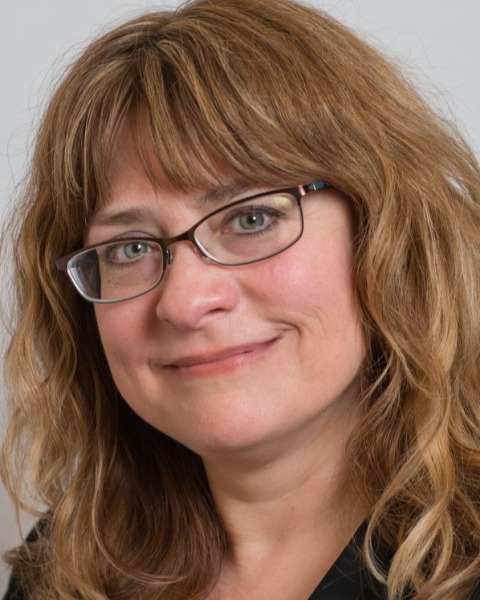Quality Improvement
(P20) Using Data and Resources for Harm Reduction in SNF/PALTC
- RA
Robert C. Accetta, RPh (he/him/his)
Senior Pharmacist
IPRO-QIN-QIO
Naples, Florida 
Anne Myrka, RPh
Senior Director
IPRO QIN-QIO
Albany, New York
Primary Author(s)
Author(s)
Objective/Aim: Data provides a pathway for actions and next steps with regard to harm reduction efforts in the community of PALTC facilities. Focusing on this concern will help providers and facilities improve their ability to deliver safe care for residents who need placement. Data analyzed included adults with a Medicare claim for a non-fatal opioid overdose; had a diagnosis of substance use disorder; needed medication assisted treatment (MAT), or who utilized high-risk medications such as opioids. Included were those with a Medicare claim for an opioid who were co-prescribed naloxone; the patients reside in adult care settings as well as post-acute/long term care facilities. We used baseline data from one year of Medicare claims to identify missed opportunities by providers for meaningful improvement in opioid harm reduction strategies. Measurable goals include increasing education about medical counseling services, rescue medications, and the use of action plans with SMART goals at facilities.
Background: Nearly 117,000 people experienced a non-fatal opioid overdose requiring an emergency department or hospitalization in 2022, per the Centers for Disease Control and Prevention. Beneficiaries requiring a hospital admission diagnosed with an opioid overdose or OUD, or experiencing opioid overdose, once stabilized, need placement options for post-acute or extended care services.
Quality Improvement Methods: Data analysis of Medicare beneficiary opioid and naloxone co-prescribing was performed for the time period of 10/1/22 – 9/30/23 using Part D claims for all beneficiaries in the IPRO QIN-QIO region, stratified by community-dwelling and nursing home residents. Results indicate incredibly low co-prescribing in both populations. Note that naloxone is also available through community distribution.
Results : Nursing home residents were at increased risk for opioid overdose deaths by both prescription drugs and nonprescribed substances. Mitigation plans included addressing the following issues: emergency medications kits or Automated Dispensing System laws vary by state; unavailability of naloxone; confusion over multiple naloxone products; lack of policies or protocols. Subsequent actions included dissemination of a survey, to further assess perceptions and needs related to admissions and caring for patients with a diagnosis of SUD.
Conclusions: IPRO convened LTC stakeholders, including New York State Department of Health, Bureau of Narcotic Enforcement, Office of Addiction Services and Supports, provider associations and pharmacy organizations, and created the Nursing Home Naloxone Policy & Procedure Toolkit with editable policies and procedures to assist nursing homes in responding to opioid induced respiratory depression events (overdoses). Ongoing projects include webinar education series on the implementation of medications for OUD that meets the needs and concerns of SNF/PALTC facilities; provision of data-driven technical assistance to nursing homes emphasizing naloxone, medications for OUD, and alternatives to opioids.
Background: Nearly 117,000 people experienced a non-fatal opioid overdose requiring an emergency department or hospitalization in 2022, per the Centers for Disease Control and Prevention. Beneficiaries requiring a hospital admission diagnosed with an opioid overdose or OUD, or experiencing opioid overdose, once stabilized, need placement options for post-acute or extended care services.
Quality Improvement Methods: Data analysis of Medicare beneficiary opioid and naloxone co-prescribing was performed for the time period of 10/1/22 – 9/30/23 using Part D claims for all beneficiaries in the IPRO QIN-QIO region, stratified by community-dwelling and nursing home residents. Results indicate incredibly low co-prescribing in both populations. Note that naloxone is also available through community distribution.
Results : Nursing home residents were at increased risk for opioid overdose deaths by both prescription drugs and nonprescribed substances. Mitigation plans included addressing the following issues: emergency medications kits or Automated Dispensing System laws vary by state; unavailability of naloxone; confusion over multiple naloxone products; lack of policies or protocols. Subsequent actions included dissemination of a survey, to further assess perceptions and needs related to admissions and caring for patients with a diagnosis of SUD.
Conclusions: IPRO convened LTC stakeholders, including New York State Department of Health, Bureau of Narcotic Enforcement, Office of Addiction Services and Supports, provider associations and pharmacy organizations, and created the Nursing Home Naloxone Policy & Procedure Toolkit with editable policies and procedures to assist nursing homes in responding to opioid induced respiratory depression events (overdoses). Ongoing projects include webinar education series on the implementation of medications for OUD that meets the needs and concerns of SNF/PALTC facilities; provision of data-driven technical assistance to nursing homes emphasizing naloxone, medications for OUD, and alternatives to opioids.
